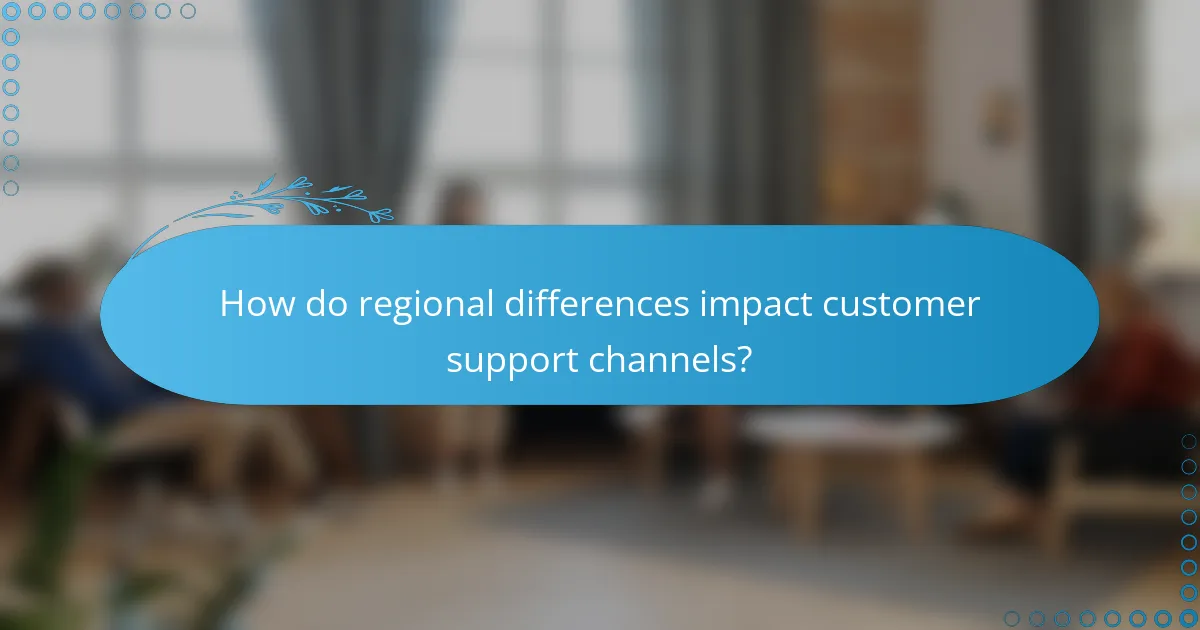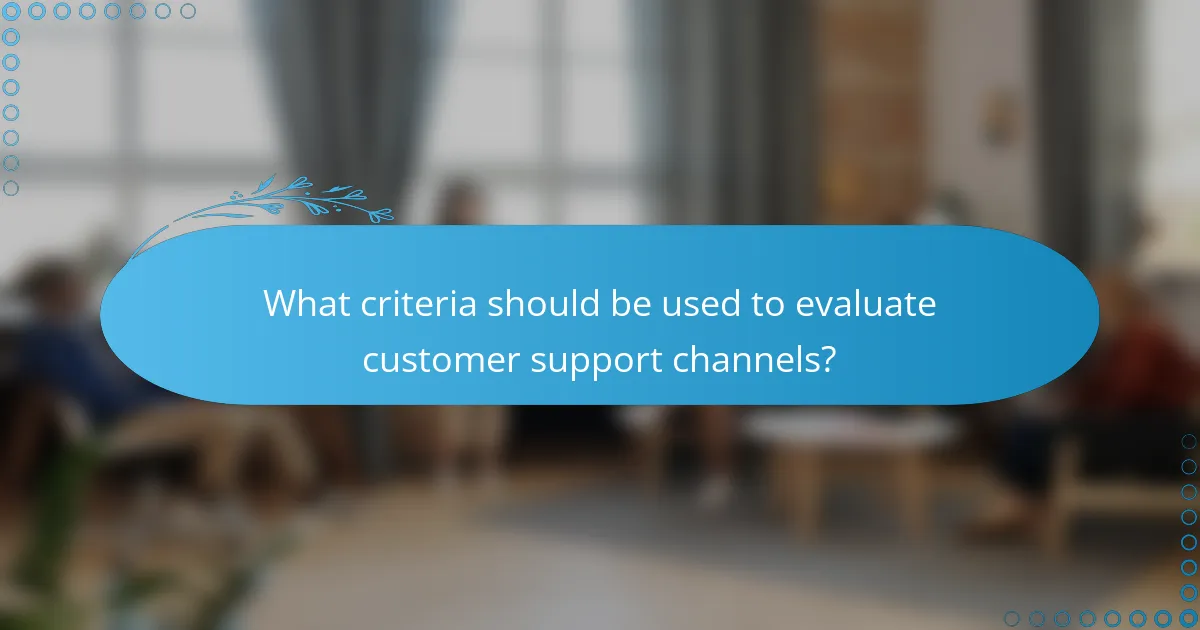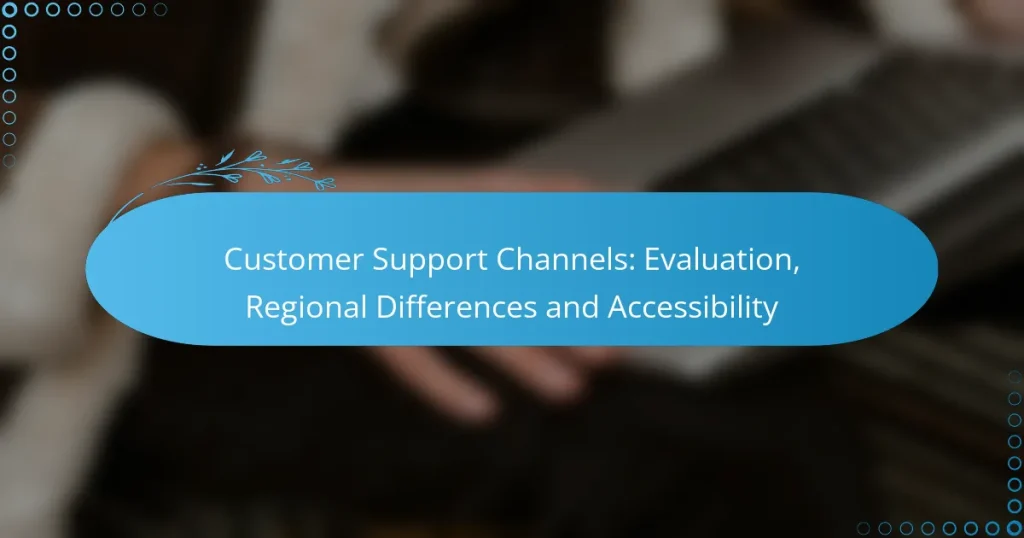In today’s global marketplace, understanding the various customer support channels is essential for businesses to meet diverse consumer needs. Effective channels such as live chat, email, and social media vary in popularity across regions, influenced by cultural expectations and communication preferences. Additionally, incorporating accessibility features ensures that all customers, regardless of their abilities or language, can receive the support they require.

What are the most effective customer support channels in the UK?
The most effective customer support channels in the UK include live chat, email, phone support, social media, and helpdesk software. Each channel offers distinct advantages and can cater to different customer preferences and needs.
Live chat platforms
Live chat platforms provide real-time assistance, allowing customers to communicate with support agents instantly. This channel is particularly effective for quick queries and can significantly enhance customer satisfaction.
When implementing live chat, consider integrating it into your website for easy access. Ensure that agents are trained to respond promptly, ideally within a few seconds to a minute, to maintain engagement.
Email support systems
Email support systems offer a more formal communication method, allowing customers to detail their issues at their convenience. This channel is suitable for complex inquiries that require thoughtful responses.
To optimize email support, establish clear response time guidelines, typically within 24 to 48 hours. Use templates for common issues to streamline responses while maintaining a personal touch.
Phone support services
Phone support services provide direct, personal interaction, making them ideal for urgent or sensitive matters. Customers often prefer speaking to a representative for immediate resolutions.
Ensure that phone support is available during peak hours and consider offering a callback option to reduce wait times. Aim for average response times of under five minutes to enhance customer experience.
Social media channels
Social media channels allow businesses to engage with customers in a more informal setting. Platforms like Twitter and Facebook can be effective for addressing public inquiries and complaints quickly.
Monitor social media regularly and respond promptly to comments and messages. Establish a tone that aligns with your brand while remaining professional, as public interactions can impact your reputation.
Helpdesk software solutions
Helpdesk software solutions centralize customer support requests, making it easier to track and manage inquiries. These systems often include ticketing features, which help prioritize issues based on urgency.
Choose a helpdesk solution that integrates well with your existing tools and offers analytics to track performance. Regularly review ticket resolution times and customer feedback to identify areas for improvement.

How do regional differences impact customer support channels?
Regional differences significantly influence customer support channels by shaping preferences for communication methods, response times, and cultural expectations. Understanding these variations is crucial for businesses aiming to provide effective support across diverse markets.
Variations in preferred communication methods
Different regions exhibit distinct preferences for communication channels. For instance, customers in North America often favor phone support, while those in Europe may lean towards email or chat options. In contrast, Asian markets frequently utilize messaging apps for customer interactions.
Businesses should analyze their target audience’s preferences to optimize support channels. Conducting surveys or analyzing existing customer data can help identify the most effective methods for each region.
Time zone considerations
Time zone differences can complicate customer support operations, especially for global businesses. Companies must ensure that support teams are available during the peak hours of their customers’ local time zones. This may require hiring staff in various locations or implementing flexible scheduling.
To manage time zone challenges effectively, consider using automated responses during off-hours and clearly communicating availability to customers. This approach can help set expectations and improve overall satisfaction.
Cultural expectations in support
Cultural norms significantly affect customer expectations regarding support interactions. For example, customers in some cultures may expect a more formal tone and detailed responses, while others may prefer a casual and quick approach. Understanding these nuances is essential for effective communication.
Training support staff to recognize and adapt to cultural differences can enhance customer experiences. Providing resources or guidelines on regional communication styles can help teams deliver support that resonates with local customers.

What are the accessibility features of customer support channels?
Accessibility features in customer support channels ensure that all users, regardless of language or ability, can effectively communicate and receive assistance. These features include multilingual support, accommodations for disabled users, and mobile-friendly platforms that enhance usability.
Multilingual support options
Multilingual support options allow businesses to cater to a diverse customer base by offering assistance in various languages. This can include live chat, phone support, or email services in multiple languages, which is essential for companies operating in regions with significant linguistic diversity.
When implementing multilingual support, consider using professional translators or native speakers to ensure clarity and accuracy. Providing language options can improve customer satisfaction and retention, especially in multilingual countries like Canada or Switzerland.
Accessibility for disabled users
Accessibility for disabled users involves creating customer support channels that are usable by individuals with various disabilities. This includes features like screen reader compatibility, text-to-speech options, and video support with sign language interpreters.
To enhance accessibility, ensure that your website and support platforms comply with standards such as the Web Content Accessibility Guidelines (WCAG). Offering alternative communication methods, such as chatbots or dedicated phone lines for the hearing impaired, can significantly improve the experience for disabled users.
Mobile-friendly support platforms
Mobile-friendly support platforms are crucial as many users access customer service through smartphones and tablets. A responsive design ensures that support channels are easy to navigate on smaller screens, providing a seamless experience for users on the go.
When developing mobile support options, prioritize fast loading times and intuitive interfaces. Consider integrating features like click-to-call or mobile chat to facilitate immediate assistance. Regularly testing your mobile platforms can help identify and resolve usability issues, ensuring accessibility for all users.

What criteria should be used to evaluate customer support channels?
To evaluate customer support channels effectively, consider response time, customer satisfaction ratings, and integration capabilities with existing tools. These criteria help determine the efficiency and effectiveness of support services, ensuring they meet customer needs and expectations.
Response time metrics
Response time metrics are crucial for assessing how quickly customer support channels address inquiries. A good benchmark is a response time of under five minutes for live chat and around 24 hours for email support. Monitoring these metrics helps identify areas for improvement and ensures timely assistance.
To evaluate response times, track the average time taken to respond to customer queries and categorize them by channel. This data can reveal trends and help set realistic expectations for customers.
Customer satisfaction ratings
Customer satisfaction ratings provide insights into how well support channels meet user needs. Common methods for gathering feedback include post-interaction surveys and Net Promoter Scores (NPS). Aim for a satisfaction rating above 80% to indicate a positive customer experience.
Regularly analyze customer feedback to identify strengths and weaknesses in your support channels. Use this information to implement changes that enhance the overall customer experience.
Integration capabilities with SaaS tools
Integration capabilities with SaaS tools are essential for streamlining customer support processes. Effective integration allows for seamless data sharing between support systems and other business applications, such as CRM or ticketing systems. This can improve response times and provide a more cohesive customer experience.
When evaluating integration options, consider the ease of setup, compatibility with existing tools, and the ability to automate workflows. Prioritize support channels that offer robust APIs and pre-built integrations to maximize efficiency.

How can businesses improve their customer support accessibility?
Businesses can enhance customer support accessibility by adopting various strategies that cater to diverse customer needs. This includes leveraging technology, offering multiple communication channels, and ensuring support is available in different languages and formats.
Implementing AI-driven chatbots
AI-driven chatbots can significantly improve customer support accessibility by providing instant responses to common inquiries. These chatbots operate 24/7, allowing customers to receive assistance outside of traditional business hours.
When implementing chatbots, businesses should focus on training them with relevant FAQs and customer scenarios to enhance their effectiveness. It’s crucial to ensure that the chatbot can seamlessly escalate complex issues to human agents when necessary.
Additionally, businesses should regularly review chatbot interactions to identify areas for improvement and update the system accordingly. This iterative process helps maintain high-quality support and ensures that the chatbot evolves with customer needs.

